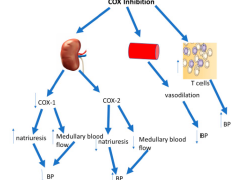Anti-Inflammatory Mechanisms of Selective Cox-2 Inhibitors: A Preclinical Analysis
DOI:
https://doi.org/10.64062/JPGMB.Vol1.Issue4.4Keywords:
COX-2 Inhibitors, Prostaglandin E2, Inflammation, Cytokines, NF-Κb, Neuroprotection, Immune Cell Infiltration, Preclinical Models.Abstract
Selective cyclooxygenase-2 (COX-2) inhibitors have proved to be a potential class of anti-inflammatory drugs, which harbor a selective target on inflammations, few gastrointestinal and renal side effects than the traditional nonsteroidal anti-inflammatory drugs (NSAIDs). This is a preclinical state of the art review on the mechanistic and pharmacological characterization of the COX-2 inhibitors; celecoxib, rofecoxib, etoricoxib, parecoxib and valdecoxib in a variety of animal models of inflammation; carrageenan induced paw edema, Collagen induced arthritis, TNBS induced colitis, LPS induced endotoxemia, and pleurisy. Results indicate the uniform reduction at the level of transcriptional expression of COX-2, blockade of prostaglandin E2 (PGE2) synthesis, and powerful blockade of pro-inflammatory cytokines (TNF-alpha, IL-1-beta, IL-6), chemokines (MCP-1, RANTES), and NF-kappa B signaling. It was also found that COX-2 inhibitors could also reduce the development of immune cell infiltration by regulating the expression of adhesion molecules (ICAM -1, VCAM -1) and maintaining epithelial and endothelial integrity. Notably, these agents showed neuroprotective and antioxidant effects on ischemic and neurodegenerative models, shown by decreased oxidative stress markers, better neuronal survival. However, paradoxically their efficacy is marred by limitations that include limited study times, unavailability of cardiovascular safety evaluations, and species-specific constraints of translation. The review focuses on the clinical promise of COX-2 inhibitors at the same time pointing out the demands of long-term safety research, CNS-specific research, comparative therapeutic response studies as well as the next-generation translational models to improve prediction of human reactions as well as to maximize therapeutic use.




